In 2022, most of us recognize the importance of going green and living more sustainably; reducing carbon emissions, conserving water and energy, and recycling are all common knowledge. However, there’s still work to be done, and it can start with choosing ethically sourced decor for your home. Just as grassroots movements are often the starting point for larger political and social changes, think of individuals going green as the pebble in the water to create the ripple effect. We’ve curated a list of first steps you can take toward a greener home to show the aspiring eco-conscious person that “sustainable” is attainable.
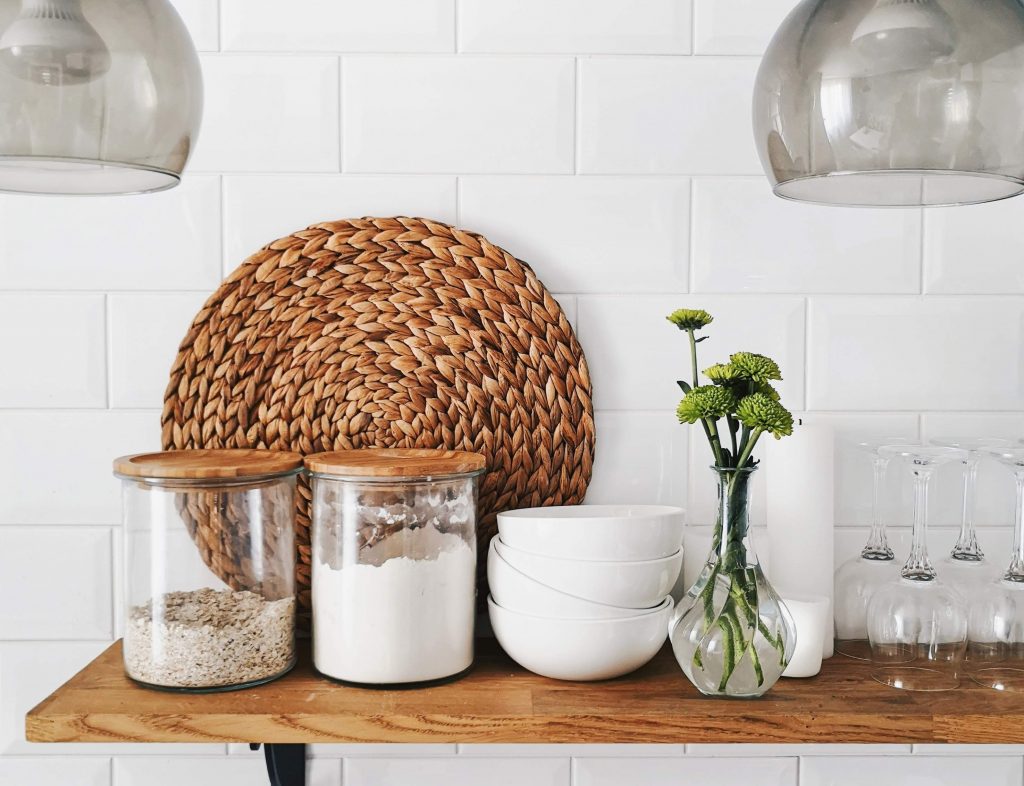
Switch out single-use plastics for reusable materials
According to Surfers Against Sewage, a UK environmental charity and advocacy group, approximately 8 million pieces of plastic pollution end up in our oceans every day, harming up to 700 marine species. Plastic waste is, indeed, a problem that hurts the environment. And most of the plastics responsible for this pollution are single-use. These include sandwich bags, disposable utensils, coffee cups, and plastic water bottles.
Fortunately, there are several reusable substitutes to have a greener home. We often use one sandwich bag for lunch and throw it away each time. Instead, opt for reusable sandwich bags or glass food storage containers. Wash them after meals and reuse them to minimize waste. In addition, you can use compostable or biodegradable utensils to alleviate plastic pollution.
When it comes to replacing plastic water bottles, there are so many cool options to choose from nowadays. Reusable water bottles are conveniently transportable, are durable, save you money in the long run, and, of course, are environmentally friendly. And if you really want to get fancy, water bottles like LARQ are self-cleaning and have water purifying technology.
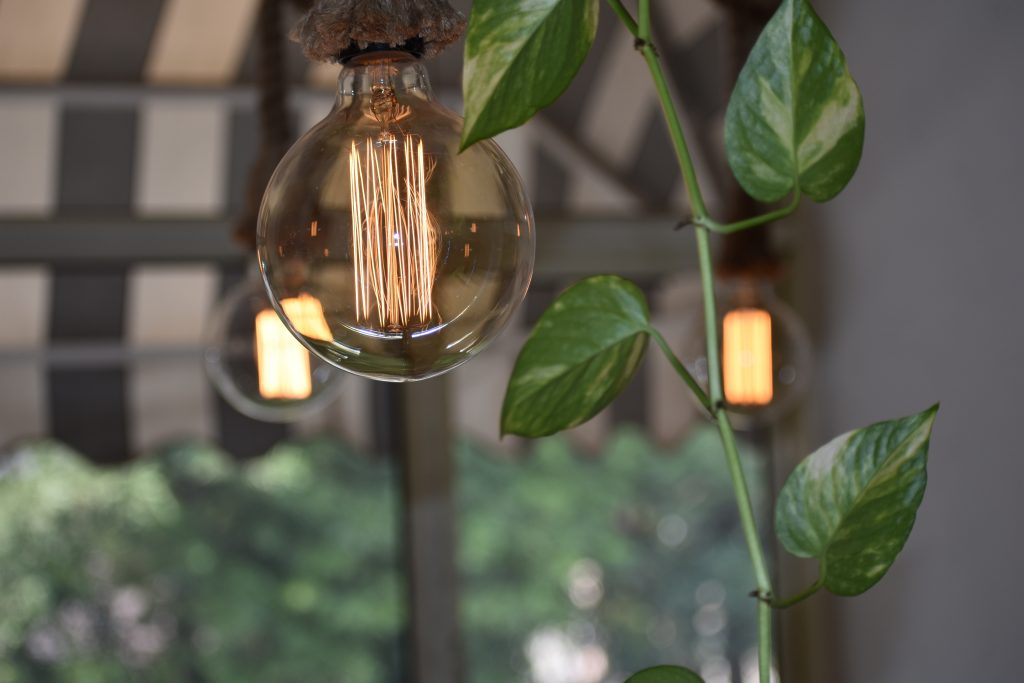
Sustainability staple: Conserve energy
In political conversations on climate change, buzzwords like “energy conservation” and “renewable energy” are thrown around often. These are typically large-scale initiatives, so it’s not always easy to discern what that means for us on an individual level. Despite this, there are ways for us to use energy more sustainably when creating a greener home.
Although this largely depends on where you live, heating and air conditioning are the biggest electricity users. Understandably, these are living essentials, but you can use them more sustainably to have a greener home. For example, make use of the other items around your house.
In the winter, simply open your sun-facing windows to heat your home. Alternatively, in the summer, use light-colored drapes and keep them closed to reduce heat gain. You can also make use of ceiling fans in both winter and summer; in the winter, your fan direction should be clockwise to create an updraft and circulate warm air around the room. In the summer, on the other hand, the fan’s direction should be counterclockwise. This creates a downdraft to circulate cooler air.
Another energy conservation method gaining more traction is replacing traditional light bulbs with LED bulbs. LED bulbs are a bit more expensive than traditional ones. However, they’re up to 80% more energy efficient, according to the U.S. Department of Energy. Walk around your home and see how many traditional bulbs you can replace. The good news is that LED bulbs come in a variety of shapes and sizes to fit any type of light fixture you may have.

Go paperless for a greener home
How many times do you open your mailbox only to find “junk mail”? Think: catalogs you don’t read, bills you’ve already seen via email, etc.). The U.S. Environmental Protection Agency reports that American households receive about 69 pounds of unwanted mail each year. (That’s about the size of a 10-year-old!)
Minimizing the amount of junk mail you receive saves trees, water, fuel, energy, and other resources used in producing unwanted mailers. Firstly, opt for paperless billing for living essentials such as rent or mortgage, utilities, and internet. To create a greener home, instead, receive your bills in your email inbox and pay online. Next, pre-approval offers from credit card companies account for a large amount of junk mail. Visit OptOutPrescreen.com to remove yourself from major credit reporting agencies. (Note: this opt-out lasts for five years only, so you’ll have to repeat the process after that time passes).
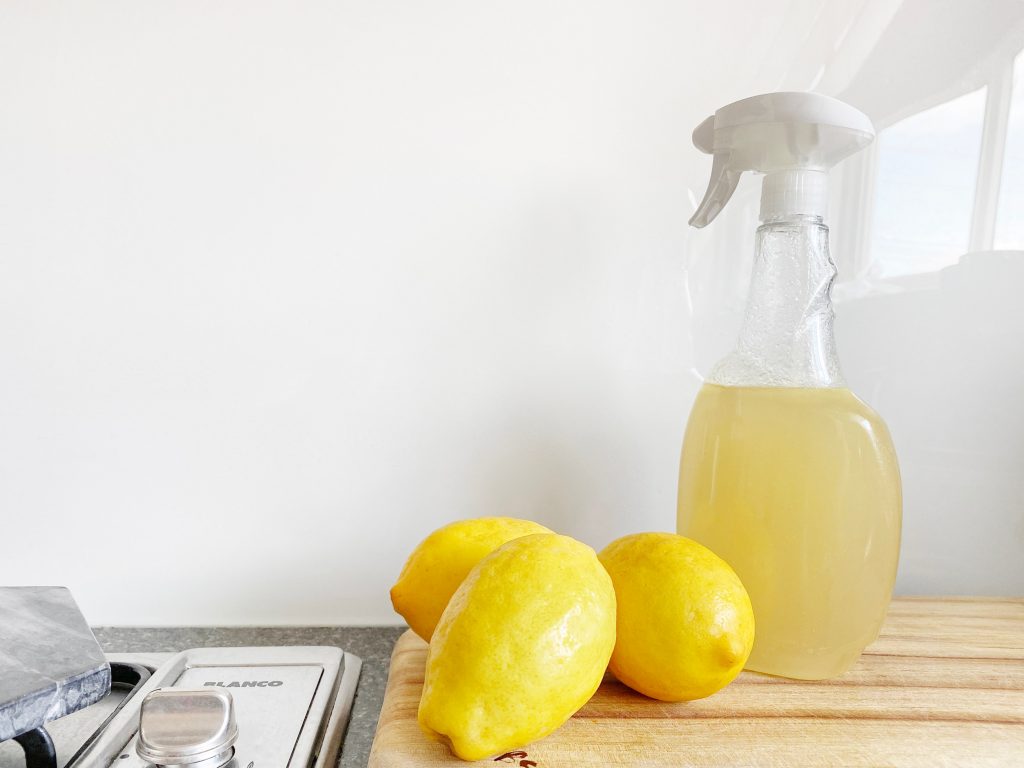
Switch to eco-friendly cleaning products
Conventional cleaning products often contain chemicals that are harmful to humans and the environment, including phosphate, lye, ammonia, and bleach. Instead, look for products that are labeled “eco friendly” or are EPA-registered disinfectants. Also, prioritize products that use natural ingredients such as vinegar or plant extracts. Read ingredient labels and make sure the products you choose don’t contain dyes, chlorine, and other harmful chemicals. For an even greener home, look for bottles made from 100% post-consumer recycled plastic. (You can usually find this information on the back of the bottle alongside the usage instructions).
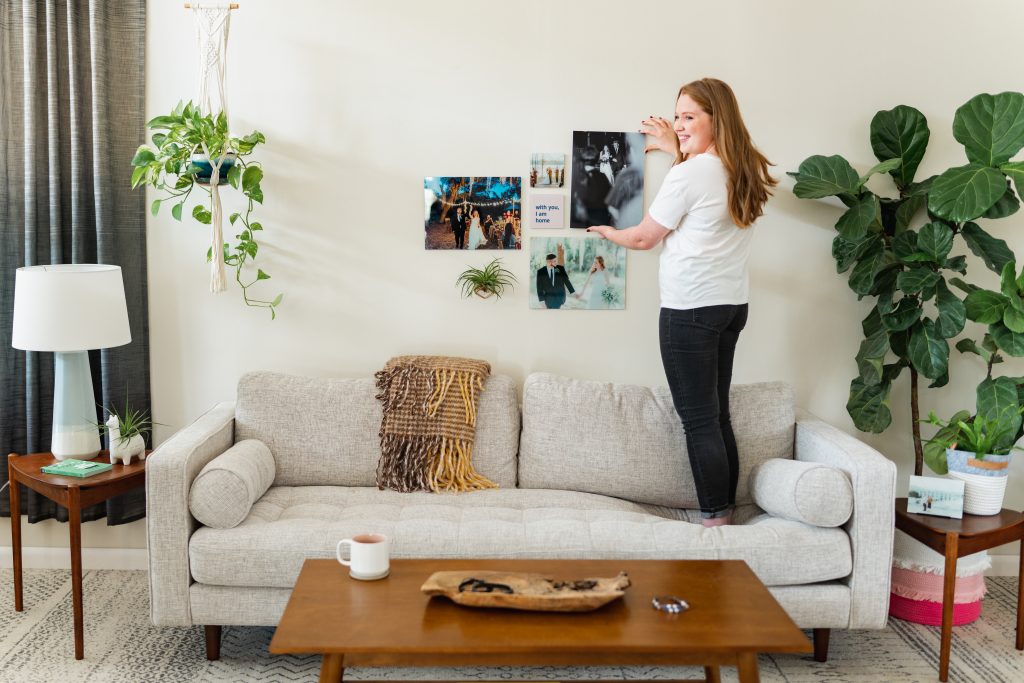
Choose sustainably-produced home decor
There are plenty of home decor furnishings on the market from big-name retailers. But the challenge comes when sourcing sustainable home decor that doesn’t compromise the environment. Luckily, there are an increasing number of eco-conscious brands committed to blending environmental impact with beautiful design. With a bit of online research, you can find a wide selection of these products to foster a greener home. But we’ll help get you started:
- Ten Thousand Villages is a maker-to-market collective that promotes ethically-sourced products while addressing the economic injustice of big-business trade.
- The Citizenry fosters relationships with artisans around the world to provide high-quality home accessories without the markup. They’re also transparent about which goods are made with recycled, natural, or organic materials.
- Preserve your memories and the planet’s health at the same time with a Fracture glass print. Sustainably handcrafted in our Florida solar-powered workshop, Fracture offers a more sleek, durable way of displaying your favorite photos. From glass to production to packaging, we are committed to reducing carbon footprint as much as possible. Then, we offset what is left through the planting of trees. With Fracture, not only will you receive a sustainable product, but you’ll support a zero-waste, carbon-neutral company.
Let a Fracture print be the thing to add a touch of personality to your home. Start here!
Become a plant parent
House plants are a great way to (quite literally) have a greener home; they serve a practical purpose in addition to being aesthetically pleasing. Research by NASA has shown that house plants can remove up to 87% of air toxins in 24 hours. In fact, certain species of plants are lauded for their enhanced air purifying abilities. Visit your nearest nursery and pick up a snake plant, spider plant, or bamboo palm to improve your home’s air quality.
We know firsthand that once you become a plant parent, you’ll want to adopt more and more! You can certainly splurge on more plants from the nursery. However, if you want a budget-friendly option, try propagating your current plants; essentially, you create new plants by cutting pieces off of your existing ones and potting them.
With these simple tips, you’re well on your way to living a more sustainable lifestyle. In the quest to have a greener home and save our planet, Fracture is honored to bring you along with us.
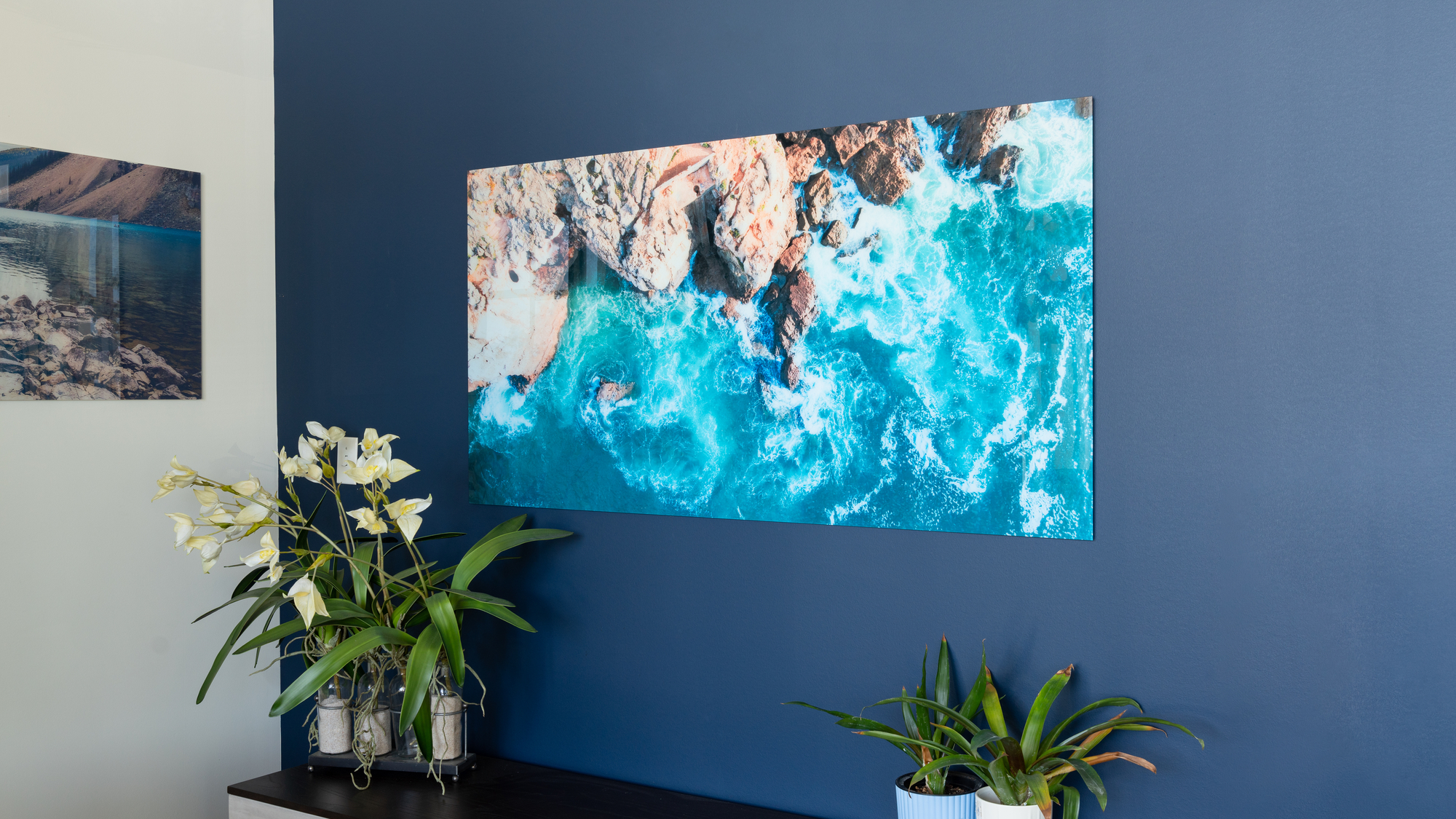




Comments